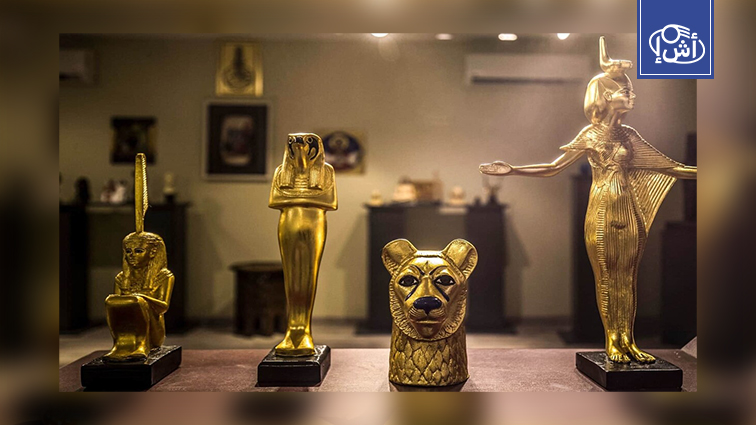Egyptian media reported that an ancient Egyptian statue was sold at a global auction organized by Sotheby’s auction house for a price considered low.
The statue, a rare piece dating back to the first half of the fifth century BC, was sold according to estimates for an amount ranging between 4,000- and 6,000-pounds sterling.
The statue depicts a monk or priest with a head made of Cypriot limestone, characterized by a conical headdress with a segmented crown, a face with a pointed chin and a finely carved mouth. The statue bears many unique artistic features such as two large almond-shaped eyes and arched eyebrows and is 15.6 cm tall.

The sale of this precious artifact at such a price provoked the condemnation of historian and member of the Egyptian Society for Historical and Geographical Studies, Dr. Bassam El-Shamaa, who expressed his concern about the practice of selling antiquities at low prices.
In a statement, he said: “We have global auction houses with revenues estimated in the billions, but what is hidden may be greater than that, and these antiquities represent an important part of Egypt’s history, and we must know who is selling and who is buying.”
El-Shamaa stressed the urgent need to launch an organized campaign to recover Egyptian antiquities located abroad, as part of broader efforts to protect and preserve Egypt’s rich cultural heritage.
It is worth noting that Egyptian antiquities located abroad are considered an important part of the world’s cultural heritage and are very large, but they raise great controversy regarding their commercial and cultural exploitation, as the antiquities are displayed in international museums and attract millions of visitors, which generates huge profits, while some believe that these treasures should be returned to Egypt to enhance national tourism and preserve Egypt’s cultural identity.
Egyptian woman publishes a video of her last will and testament before committing suicide (Video)
